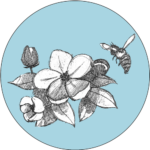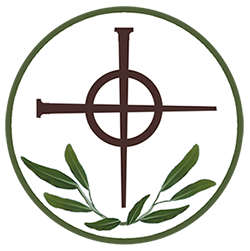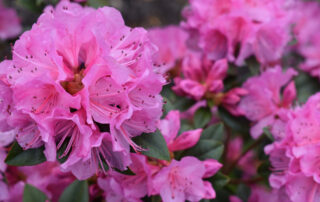 Pillar: Relationship
Pillar: Relationship
Laudato Si’ Action Plan Goals: Ecological Spirituality
 Pillar: Relationship
Pillar: Relationship
Laudato Si’ Action Plan Goals: Ecological Spirituality
Group (Grade Levels): Ages 6-9, or older
Learning Goals:
- Learn the parts of a flower including the leaf, the sepals, the stamens, the pistil, the style, the ovary, and the ovules, and how they relate to each other.
- Learn why plants have flowers.
- Experience through flowers the inherent beauty and interconnectedness of nature.
Materials Needed: piece of paper, pencil, tweezers, scissors and an actual specimen (lily or tulip preferably, as parts are easily observable)
Estimated Time to Complete Activity: 30 to 45 minutes
General Outline of Experience
- Scripture passage: Luke 12:27: “Notice how the flowers grow. They do not toil or spin. But I tell you, not even Solomon in all his splendor was dressed like one of them.”
- What are your favorite flowers? When do they bloom?
- Do you know how they grow? Do they look the same at different times of the year or in different seasons?
- Why do plants have flowers?
- Laudato Si’, 100: “God wills the interdependence of creatures. The sun and the moon, the cedar and the little flower, the eagle and the sparrow: the spectacle of their countless diversities and inequalities tells us that no creature is self-sufficient. Creatures exist only in dependence on each other, to complete each other, in the service of each other.”
- Why do flowers exist?
- What other creatures and parts of the environment are they connected to?
- How do they help other creatures?
- For younger children read aloud the book The Reason for a Flower, by Ruth Heller. This can be found in a library or purchased. An online reciting of the book can be found at https://www.youtube.com/watch?v=_DtHM-Nek9c.
- When finished, elicit questions about their experiences and observations with flowers in gardens at home or perhaps at their grandparents.
- Lead up to key points:
- What is the reason for a flower?
- To produce seeds. Plants have flowers in order to reproduce.
- Flowers also bring beauty to the landscape and provide food for other creatures like birds and bees. Their beauty (especially smell and color) attracts creatures to them.
- Some flowers are edible or produce fruits or seeds that are edible, so they provide food for us and for other creatures.
- Different flowers and seeds are adapted to different environments and climates and bring food and biodiversity to all kinds of places around the world.
- Flowers teach us that no creature is self-sufficient because they require other creatures to pollinate them and spread their seeds.
- What is the reason for a flower?
- Introduce the lesson, focusing on learning the parts of a flower. Each participant (or each group if the participants have been divided into groups) should have a piece of paper, a pencil, tweezers, scissors, and an actual lily flower.

- Identify the flower for them as a lily. Ask the participants to observe the flower carefully. Prompt them with questions.
- Can you see the beautiful color of the flower?
- And what a lovely smell; can you smell it?
- Do you think bees and other insects would be attracted to it?
- Teach the participants the parts of the flower. First take a look first at the leaf on the side of the flower. Carefully remove it. (Use your hands to show how to gently remove the leaf and place it on the paper). The leaf is a very important part of the flower because it is where the flower plant makes its own food, AND where, inside the leaf, tiny pores called stomata help the flower take in air.
- Next, investigate the beautiful pink petals on the flower. Ask the participants to carefully remove each petal with their fingers and place them on their observation sheet of paper. Prompt them with questions.
- Why is the flower so colorful and beautiful?
- God created these beautiful colored petals to attract bees and insects to the flower. They will help the flower to reproduce.
- What is left are the reproductive parts of the flower. There are male and female parts.
- The stamens are the male part of the flower and they are on top of a tube-like structure called the anther. There are six stamens on a lily flower. The stamen holds the pollen, which is carried from flower to flower to help each flower become fertilized. Prompt with questions.
-
- How is the pollen carried from one flower to another when the plant cannot move?
- Bees, butterflies, moths, hummingbirds, bats, beetles and other insects carry pollen for the flower.
- What do they get in return? They get food from pollen or nectar.
-
- The pistil is the female reproductive part of the flower. It has 3 parts: (1) The stigma traps the pollen. (2) Attached to the stigma is the stem-like style, which is like the highway for the pollen to travel through. When the pollen reaches the bottom of the style, it activates and fertilizes the ovules, which contain egg cells. (3) The ovules are inside the ovary, which is the light green part above the stem. When the pollen (the male reproductive aspect of the flower), travels down the style and reaches the ovules inside the ovary (the female reproductive aspect of the flower), it fertilizes the egg cells inside. Once fertilized, they will eventually turn into seeds, which are then spread by wind or animals. When the seeds sprout, they become the new life for the next flower.
- The stamens are the male part of the flower and they are on top of a tube-like structure called the anther. There are six stamens on a lily flower. The stamen holds the pollen, which is carried from flower to flower to help each flower become fertilized. Prompt with questions.
 Review and label all the parts of the flower now on the paper.
Review and label all the parts of the flower now on the paper.- Ask the participants to reflect on how amazing it is that all these parts of a flower are important and that all have their God given purpose or task to do.
- Proposed discussion questions:
- What was most interesting to you about the flower?
- Does the flower have one part that is more important than the others? (Lead children to realize that each part needs the others.)
- How is the flower dependent upon other creatures?
- What would happen if there were no birds, bees, and other insects to be attracted to the flowers?
- Refer back to the opening Scripture passage. What feelings does the beauty of the flower awaken in you?
- Potential analogies
- Just like parts of a flower, our bodies have parts that work together.
- Just like our bodies, the Church (God’s family) has various parts that make it up and that each have a special place and role to play.
- For example, there are priests, sisters, and the lay faithful. Each one has a special role to play that is different from the other, but they are interconnected and need each other.
- There are also men and women, and like the male and female parts of the flower, men and women each have unique, equally important, and complementary roles.
- Discuss how relationships are founded on differences; i.e., they work well when the two things or persons are different and yet interconnected. How did learning about the parts of the flower teach you about this?
- For a younger child, have the labels of the parts already printed out.
- For an art lesson, have the children draw this or another flower.
Cross references to related experiential activities: Flower Gazing and Poetry, Gardening, Flower Arranging




